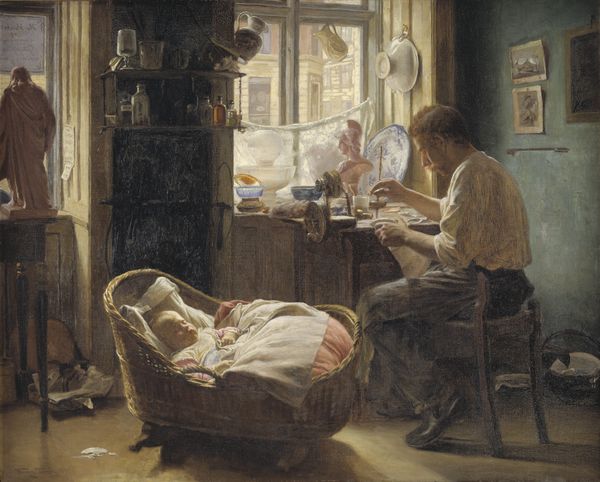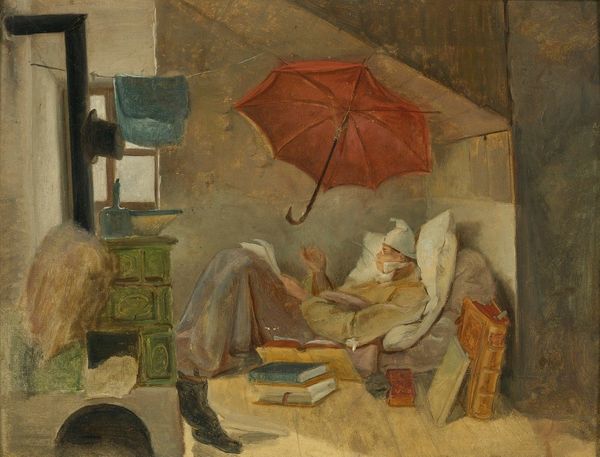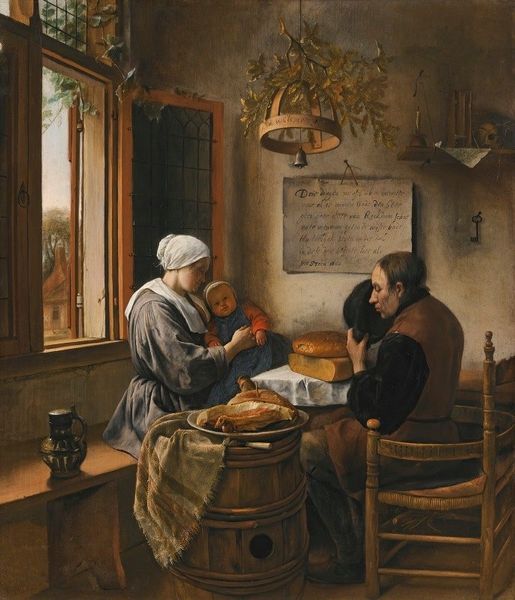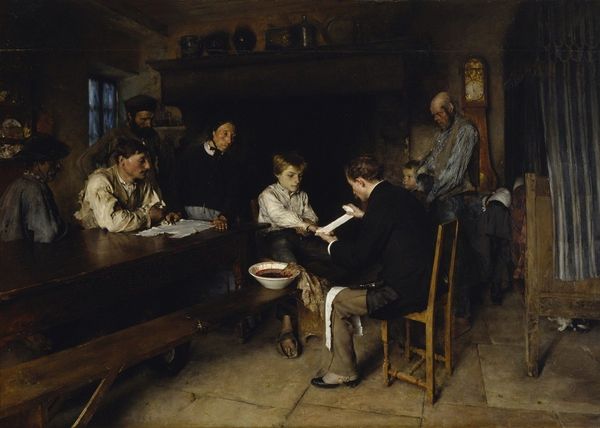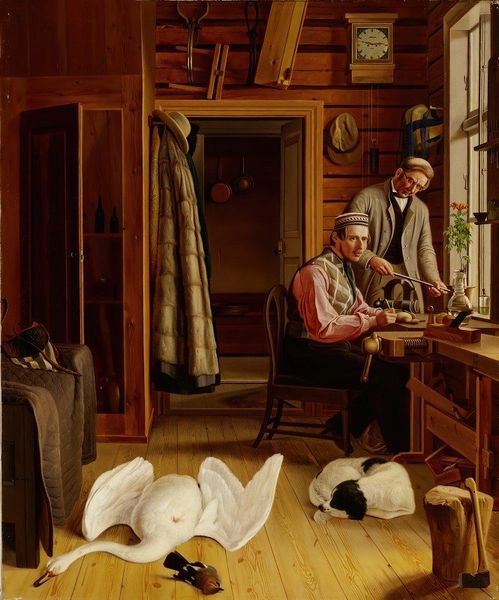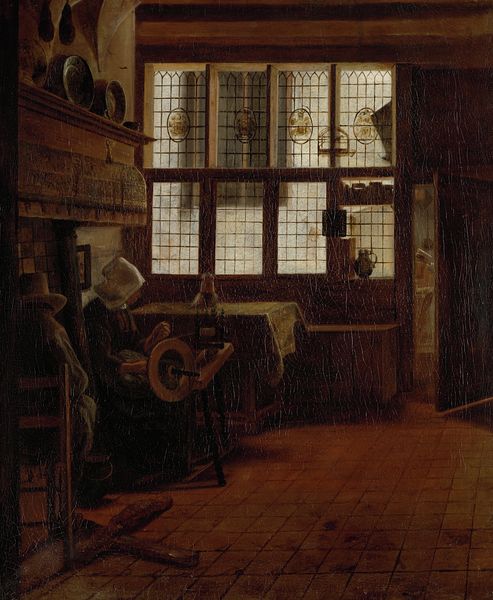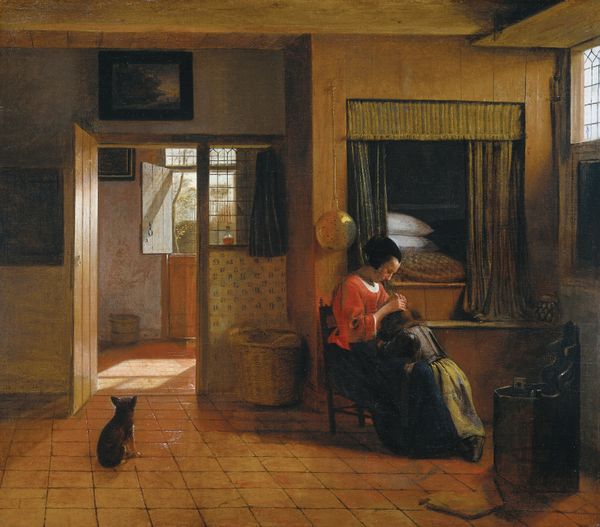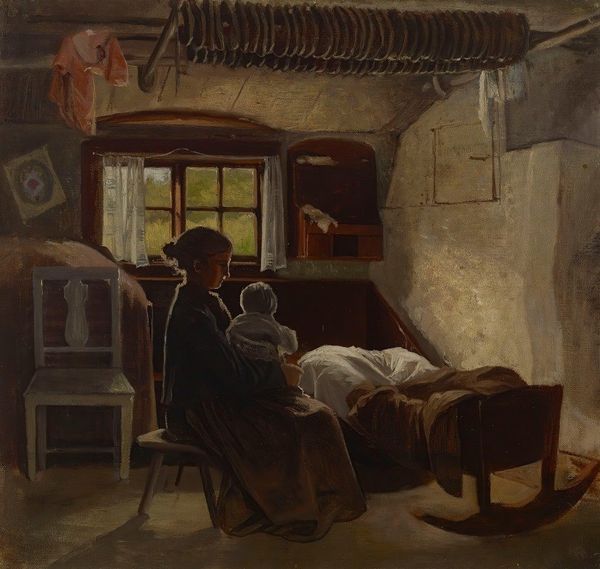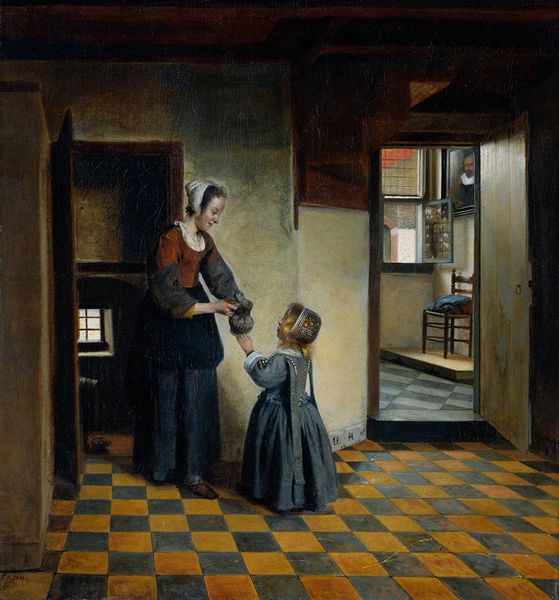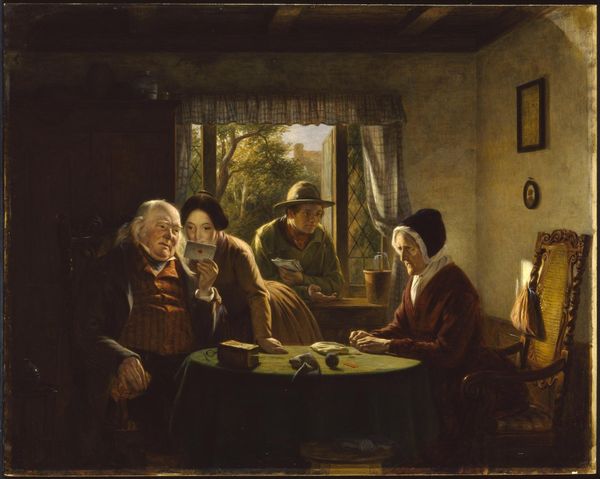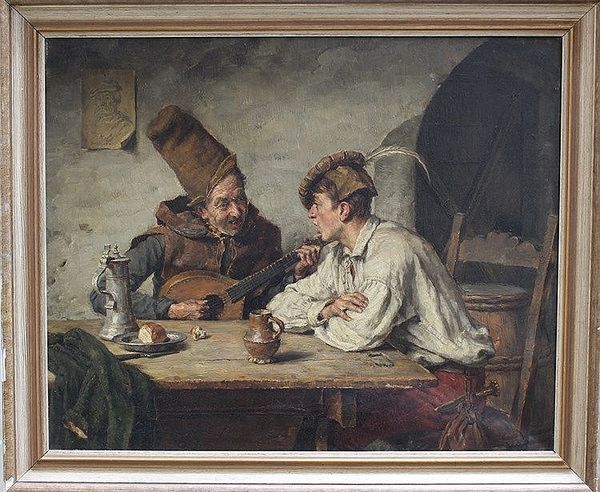
oil-paint
#
portrait
#
gouache
#
narrative-art
#
oil-paint
#
romanticism
#
genre-painting
Dimensions: 44.9 x 37.6 cm
Copyright: Public domain
Editor: This is Carl Spitzweg's "The Poor Poet" from 1837, rendered in oil paint. It's a poignant, somewhat humorous scene, showing a man huddled in what looks like a cramped attic. The details really grab you, from the umbrella used as a makeshift roof to the pile of books doubling as a headrest. What can you tell me about this painting? Curator: Look at how Spitzweg depicts the poet's material conditions. The leaking roof necessitates the umbrella, becoming a prominent, almost absurd detail. Consider this not just as humor, but as a commentary on the relationship between artistic labor and its rewards. The means of survival—patched roof, worn clothes—directly contrasts with the labor of intellectual production, represented by the books. Editor: So you're saying the objects themselves are telling the story, beyond just illustrating poverty? Curator: Precisely. Spitzweg meticulously paints the textures and placements. The cracked plaster, the tattered papers, the worn pages of books, all crafted using oil paint. These are not incidental details but deliberate choices highlighting the lived reality of the poet, a commentary on artistic labor embedded in its material constraints. Think of how the painting was made, with oil paints, a valuable material that would have required resources. Editor: It’s fascinating to consider the contrast between the ‘high art’ of painting and the very humble, almost abject, state of the subject being painted. Curator: The layering of paint becomes analogous to the layers of societal disparity. What appears at first glance as charming romanticism actually presents a stark depiction of the artist's position within the means of production. It compels us to ask: where is the value placed, and by whom? Editor: I never thought about it that way before; it's like the painting itself is a material testament to those imbalances. It really adds another layer to my understanding. Curator: Exactly, it is important to analyze how artists work through materials, revealing hidden stories.
Comments
No comments
Be the first to comment and join the conversation on the ultimate creative platform.
